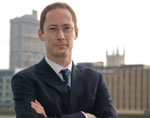 Our experiences in London’s West End have proven that creating destinations that stand the test of time is about more than just great buildings. Property owners in the 21st century have to consider a whole range of wider issues: ecology, air quality, transport infrastructure and public spaces, social cohesion and the local economy. They must also look at how digital infrastructure can enhance the physical environment.
Our experiences in London’s West End have proven that creating destinations that stand the test of time is about more than just great buildings. Property owners in the 21st century have to consider a whole range of wider issues: ecology, air quality, transport infrastructure and public spaces, social cohesion and the local economy. They must also look at how digital infrastructure can enhance the physical environment.
With London’s population on course to top 10m by 2030, we can’t forget the important role that green spaces play as we look to meet the housing and infrastructure needs of future generations. London is often cited by commentators as being one of Europe’s worst cities for air pollution, especially for concentrations of nitrogen dioxide.
Meeting this challenge requires a whole range of solutions to limit pollutants, which is why, for example, we have looked to cut vehicular emissions associated with our portfolio through the introduction of a consolidated delivery service for occupiers using electric vehicles, as well as our “Summer Streets” traffic-free shopping days on Regent Street, which reduce N02 levels by up to 75%.
However, plant life can make an important contribution too. In Chicago, installing green roofs across 10% of the buildings in the city removed 17,400mg of nitrogen dioxide each year. However, investment in green infrastructure can also bring a whole range of additional benefits, from enhancing ecological diversity to raising Londoners’ quality of life, and improving the experience that the city offers to visitors.
Recognising these benefits, we are working to create more than a hectare of green space across Regent Street and
St James’s. This will be the first phase of a pioneering ecology initiative called Wild West End, which brings together some of London’s leading property investors to promote a network of green infrastructure right across the West End.
Although there are clear economic, social and ecological reasons for enhancing London’s green spaces, we also see a strong commercial case for developers to invest their time and capital in such projects.
Businesses today are judged on their values and the wider benefit they create as much as the strength of their balance sheet. For property developers, that means there is a link between the sustainability of schemes, the companies that build them, and the calibre of occupiers they can attract. Alongside offering innovative designs for energy-efficient structures, tree planting, green roofs and walls, and bird and bat boxes can help create the kind of sustainable development that modern businesses are looking for.
Furthermore, destinations are always more successful when they are set among inspiring public spaces. Preserving the natural environment within cities can enhance the attractiveness of a scheme, creating that all-important sense of place. Whether it is retailers concerned about driving footfall, residents looking for accommodation that offers some solitude from the city life, or businesses looking for destinations that enable them to attract the best staff, ecological installations can help to deliver an exceptional customer experience.
London’s future success depends on a whole host of things, from providing adequate housing stock and world-class infrastructure, to continuing to be open to global trade and investment and providing leading retail and cultural destinations. We see a growing network of green spaces as an important part of the mix.
The collaboration of leading property businesses behind Wild West End represents the property industry at its best: looking beyond individual short-term commercial ambitions to invest in the future of London, creating an attractive, sustainable environment capable of underpinning ongoing commercial success.
And, as the project starts to enhance the environment in the West End for the benefit of all, we are confident that it will also prove to be a strong investment in the future of our portfolio, one which yields long-term commercial dividends for our business.
James Cooksey, head of central London, The Crown Estate










